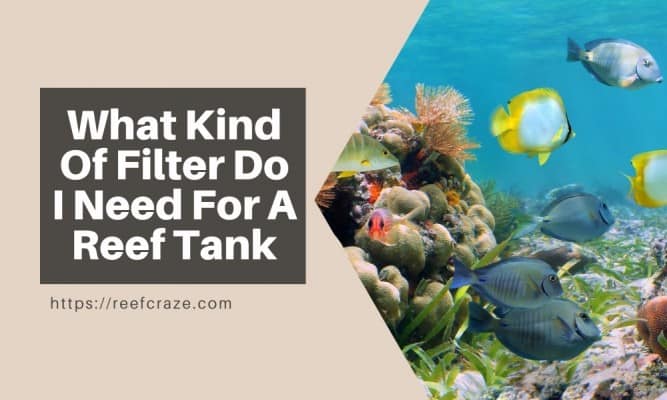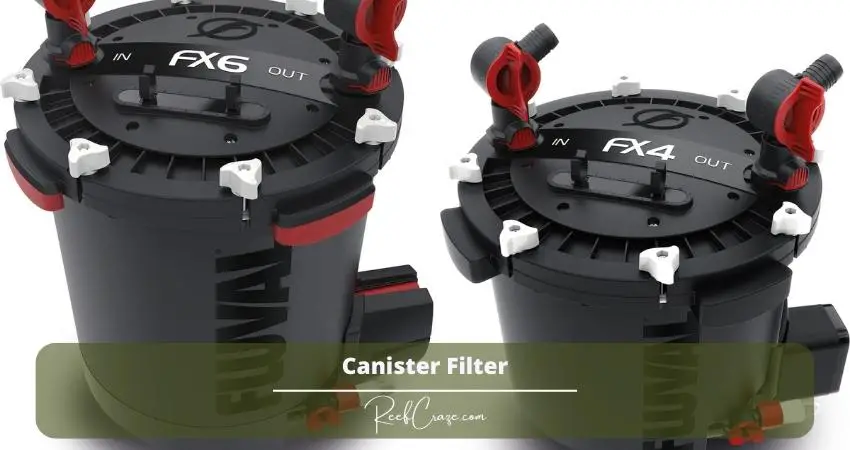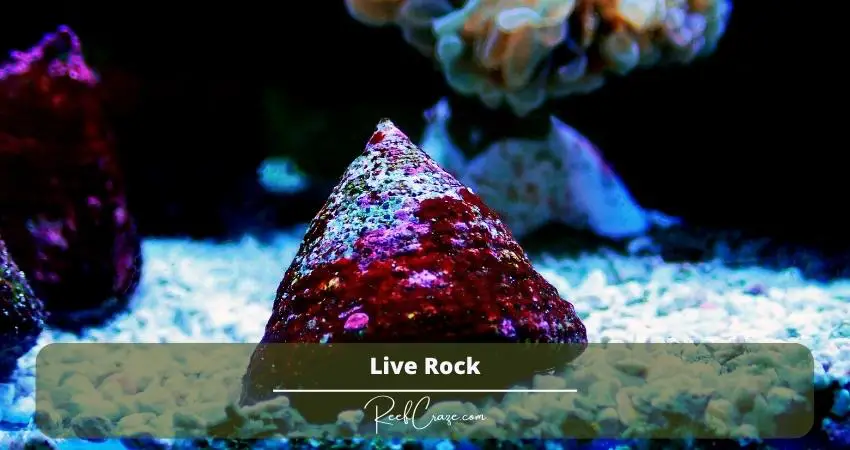To maintain a fish tank properly, it is of utmost importance to have a good filtration system in your reef tank. Because the main function of a filter is to keep the water clean by removing wastes, ammonia, and nitrates so that your tank inhabitants can stay safe, healthy, and breathe well in the water. So, unless you want otherwise, you have to choose a good filer for your reef tank.
There are a variety of filters available in the market for reef tanks. Some of them are sumps, wet/dry filters, canister filters, protein skimmers, live rock, activated carbon, media reactors, UV sterilizers, etc.
Let’s discuss each of them and learn about their functions, advantages and disadvantages, and most importantly, the filtration media/purposes. It will help you make an informed decision before you choose a filter for your reef tank.
What Are The Filtration Media/Purposes?
Filtration systems are used for more than one purpose. What kind of filter you will use depends highly on what purpose you want it to serve. Here are the 3 types of filtration media or purposes for you.
Mechanical Filtration Purpose:
This type of filtration system works on filtering the wastes from the water mechanically. It can be any object that is netted. The water passes through the object leaving the waste behind. Canister filters are often used for mechanical filtration purposes.
Chemical Filtration Purpose:
In this process, a chemical is used to keep the other chemicals in the tank water stable. Making salt with those chemicals, it gets them to rest at the base. Activated carbon is very popular as a chemical filtration system.
Biological Filtration Purpose:
This one is almost similar to the previous one. Their main difference is in the method. In this system, an environment is created where beneficial bacteria can grow and consume the harmful chemicals like ammonia, nitrite and nitrate. Live rock is widely used for this kind of filtration purpose.

How Do Sumps, Wet/Dry Filters, And Refugiums Work?
These types of filters are usually used as primary filtration systems for reef tanks. Sumps, wet/dry filters, and refugiums are slightly different from each other.
They all use a drainpipe and a chamber of overflow. In case of a sump, the tank water passes down to the sump that usually lies in a cabinet under the tank. There is also a pump that circulates the water and returns it to the reef system.
A wet/dry filtration system uses a filter sock made of felt and some bio-media like bio-balls and filter pads. A sump is like an advanced version of this filter. It usually uses live rock instead of bio balls. It also has compartments for keeping media reactors, heaters, protein skimmers, etc. A sump is usually installed in reef tanks that have live corals.
A refugium is a kind of sump system that is modified with a central part used for growing macroalgae like Chaetomorpha. There is lighting over a refugium that helps the algae survive and grow.
Advantages & Disadvantages
This kind of filtration system performs very well. It is reliable and capable of handling major leaks. It provides your reef tank with additional aeration. Moreover, it also adds beneficial water volume additionally and contributes to the tank water’s improved quality.
Its disadvantage is that it needs electricity. Power outages can cause major problems which will require you to have a backup system.
How Do Canister Filters Work?

A canister filter is used for a reef tank that does not have sumps or overflows. The siphon hose of a canister circulates the water from your reef tank to the filter. And in the process, the tank water passes several filtration stages and returns to the reef tank through the return hose and the pump built in the tank.
There are some canister filters available that are more advanced. They have got thermometers built in them and ultraviolet sterilizers. Some of them even breathe resembling the functions of wet/dry filters.
Advantages & Disadvantages
Canister filters are great for large tanks. But you can also have them in nano size. It is extremely powerful and efficient. It is so versatile that you can use it for all the three filtration purposes.
But it comes at a good price, as all quality things do. Also, it is a little hard to maintain (which shouldn’t surprise you). However, it is better than a lot of other filtration systems, if not the best. And so, it is highly recommended for reef tanks.
How Do Protein Skimmers Work?
This kind of filter will remove the organic wastes that are dissolved in the tank water. The process usually includes a water pump that takes the water in, mixes it with the air, and creates a column of turbid water with bubbles. The bubbles are drawn into a cylinder where they evaporate and become larger bubbles of wastes taking a membrane-like shape.
There is a collection cup that comes with a protein skimmer. It has to be emptied regularly.
Advantages & Disadvantages
The main advantage of having a protein skimmer as a tank filter is that a skimmer removes all the organic compounds before the bacteria can break it down. This means the bacteria have less work to do. And that results in the reduction of nitrates in water.
One drawback of using a protein skimmer is that it removes other necessary elements from water while removing protein.
How Do Live Rocks Work?

Live rocks function as the biological filter for reef tanks by hosting the nitrifying bacteria that are required for processing waste in the water. While the bacteria work on restoring the chemistry of the water by supplementing the process, the corals and the algae that grow on the surface of the live rocks help to reduce the levels of nitrates, phosphates, and ammonia.
Advantages & Disadvantages
Using live rocks is one of the best ways to provide biological filtration for your reef tank. If you can stack them correctly, they will give your tank a very natural and beautiful look. They will also make the environment more natural for your tank inhabitants by providing them with hiding spots.
One of the disadvantages includes the hitchhikers that the live rocks come with. They are not so helpful for the tank. And it is very expensive. It will cost you a lot if you decide to use live rocks as the sole filtration system for your reef tank.
How Do Activated Carbon Filters Work?
Activated Carbon (AC) filters mix and make salt with other chemicals that can cause harm to the tank inhabitants. They make all the medications, odors, and contaminants go away. They also use absorbing products that are used to remove phosphates, nitrates, silicates, and other unnecessary chemical compounds from the water.
Advantages & Disadvantages
They are excellent for using as a chemical filtration system. They also come in handy when there is any problem concerning the water quality. They are not expensive and can be maintained easily.
However, this filter cannot work on the chemicals that the carbon cannot attract. And you cannot use them for a long time.
How Do Media Reactors Work?
You can use media reactors for solving particular problems like controlling the levels of phosphates and nitrates. A media reactor has a long column that contains a filter. The tank water passes through the filter with a pump and then returns to the system.
There are several types of media reactors. Among them, GFO (Granular Ferric Oxide) and bio-pellets are typically recommended for reef tanks to control phosphates and nitrates. GFO works well when the water flow has a slow rate. Bio-pellets are good for water with a moderate or high flow rate.
Advantages & Disadvantages
GFO and bio-pellets are fine for filtering the tank water. GFO will readily reduce the phosphate levels and bio-pellets will drive the nitrate levels down.
But here’s the problem as you can see. GFO can only reduce phosphates, not nitrates and vice-versa for bio-pellets. You cannot use only one of them to reduce both phosphates and nitrates. Plus, they are a little pricey too.
How Do UV Sterilizers Work?
When a UV sterilizer passes the tank water through an ultraviolet light bulb, the light kills all the bacteria, parasites, and algae in that water before it can return to your tank. Associated with a good filtration system, a UV sterilizer is a very effective way to keep your tank water clean.
Advantages & Disadvantages
The main advantage of using this kind of filtration system is that it will help you keep the growth of algae, bacteria, and parasites under control. If you do not take care of your tank regularly, parasites and algae can reproduce fast and cause problems to the reef system. A UV sterilizer will remove them and reduce their reproduction rate.
Besides, they come in different sizes featuring different rates of water flow to keep either bacteria and algae or parasites as their target. So, you have a lot of options to choose from.
A disadvantage of a UV sterilizer is that it only targets the organisms that float in the water. It cannot affect the organisms that lie on the tank surface or have already infected the tank inhabitants.
It can also mess with medications or chemicals. So, when you are about to use any chemical or medication in the water, you will have to switch the sterilizer off until you are done with the treatment process.
Another disadvantage is that it is a little costly. However, you can be certain that you won’t be disappointed. Eventually, its performance will pay you off.
Final Words
We are almost at the end of our discussion. Going through all of it, you might feel very confused about which filter to buy for your reef tank. Let me stop you right there. It is nothing to be confused about.
Selecting a filter is quite easy. First of all, determine the filtration media/purpose for your reef tank. It will help you a lot to choose a filter.
When you have it fixed, start looking for the appropriate filtration system. But do remember that it is not like you have to go for a specific filter for your tank. You can choose more than one and make a combination of them – that works even better.
Then, after narrowing down your options, choose the ones that suit your tank, budget plan, and other conveniences the most! And you will get what you need!
Now, go buy one and start your journey as a reef tank aquarist. Good luck!
